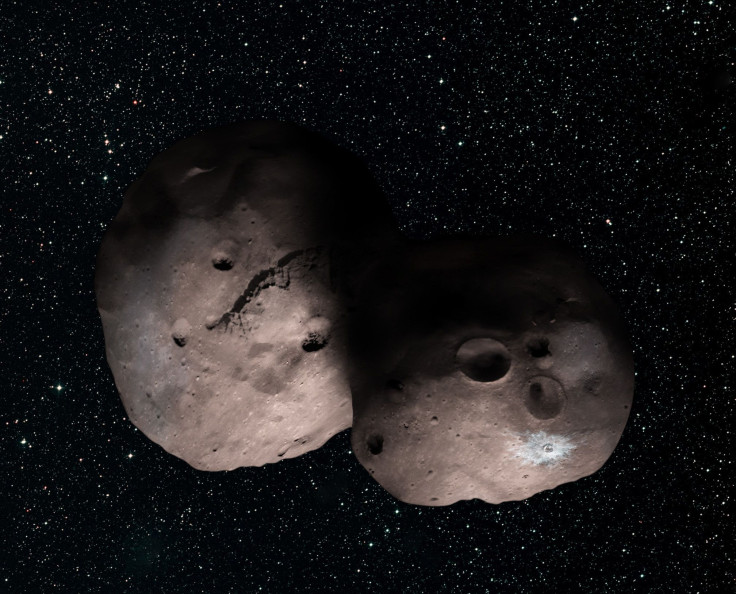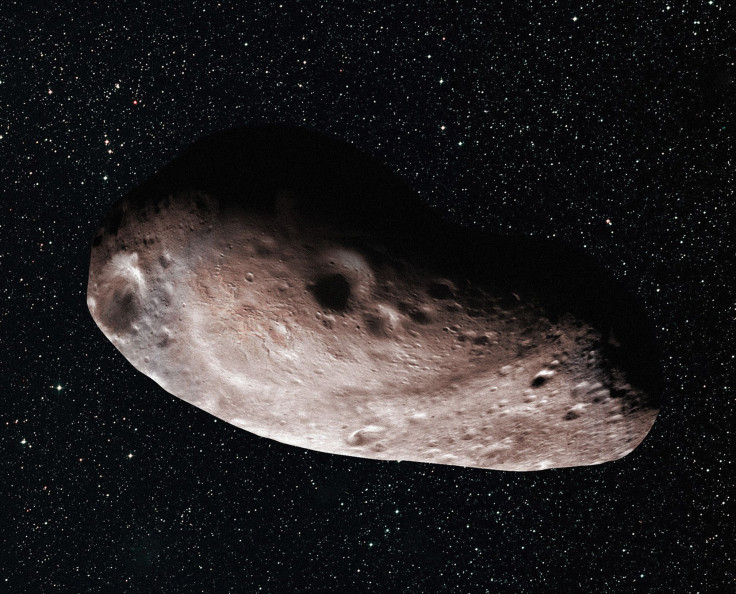Loner Or Lovers? NASA Spacecraft To Investigate Ancient Mystery Object — Or Objects

A NASA spacecraft’s next mission will be to fly past and get a better look at a mysterious ancient object in the far reaches of our solar system, and it might get a two-for-one deal.
Scientists recently got a new view of 2014 MU69, a space object that New Horizons is scheduled to pass on New Year’s Day 2019, and it may actually be two objects. NASA explained the body passed in front of a star in mid-July in an event referred to as occultation, from the perspective of telescopes in Argentina, creating a brief shadow that illuminated details about the object’s size and shape as well as offered information about its orbit and environment.
Read: Old Asteroids Show How the Planets Formed in a Young Solar System
Despite previous observations that showed a spherical object floating through the universe on its own, there is more elongated. It could be one thing in the shape of “a skinny football,” NASA said, or it could be a pair of objects that are close together and orbiting one common, nearby point at the same time that they are orbiting a wider loop around the sun.
“Two bodies may be orbiting very close together or even touching — what’s known as a close or contact binary — or perhaps they’re observing a single body with a large chunk taken out of it.”

Whether MU69 is one object or two, the total length is at most 20 miles, NASA said. In the case of it being a binary object, the individual pieces would split that length roughly evenly.
When New Horizons goes by MU69, it will be the farthest flyby any spacecraft has ever made, at a distance 4.1 billion miles from Earth and 1 billion miles beyond Pluto.
New Horizons launched in 2006 and got closer to Pluto than any other space probe in 2015. The spacecraft is now investigating other objects like comets in the outer solar system’s Kuiper Belt, a huge ring of material that is left over from when the planets were forming around a young sun.
NEW! Enjoy this #Pluto flyby video, made with data from our historic #PlutoFlyby. pic.twitter.com/viHjvnfXw6
— NASA New Horizons (@NASANewHorizons) July 14, 2017
MU69 is one of those Kuiper Belt objects, known as KBOs.
“The shape of MU69 is truly provocative, and could mean another first for New Horizons going to a binary object in the Kuiper Belt,” mission principal investigator Alan Stern said in the space agency’s announcement. “I could not be happier with the occultation results, which promise a scientific bonanza for the flyby.”
Read: Have We Found the Very First Exomoon?
In addition to telescopes on the ground taking measurements during the occultation, the Hubble Space Telescope and the European Space Agency satellite Gaia helped scientists predict where they could sight the small shadow MU69 would cast onto Earth’s surface when it passed in front of the light of the star.
The team then added their observations to the more than 100,000 images taken of the KBO in a previous occultation sighting.
“These exciting and puzzling results have already been key for our mission planning,” New Horizons scientist Marc Buie said in the statement, “but also add to the mysteries surrounding this target leading into the New Horizons encounter with MU69, now less than 17 months away.”
© Copyright IBTimes 2024. All rights reserved.





















